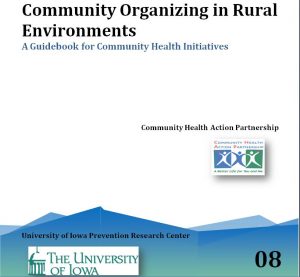Breadcrumb
Healthy Options and Other Toolkits
Healthy Habits Start Early
This toolkit is a guide for implementing Healthy Habits Start Early, a garden-based nutrition program for home childcare providers and daycare centers that supports and improves healthy eating practices. This toolkit includes menu ideas, Iowa gardening tips and activities, parent engagement tools, progress tracking tools, and advice for safely adapting to the COVID-19 crisis. The toolkit is a collaboration between the University of Iowa College of Public Health and the Iowa Department of Education Team Nutrition Program. To access the toolkit click here.

Compré Saludable / Shop Healthy Iowa
Compre Saludable/Shop Healthy Iowa is a healthy retail program designed for Hispanic tiendas or stores. The initiative is a collaboration between tienda owners, Iowa Department of Public Health, Iowa State University Extension and Outreach and University of Iowa College of Public Health. To find out more about the collaboration, view A Cross-Cultural Collaboration to Improve Healthy Retail Practices in Tiendas presentation. To access Shop Healthy Iowa Implementation materials and to view community stories please click here.

Shop Healthy Iowa Implementation Model
Shop Healthy Iowa Local Project Coordinator
- reaches out to store manager about possible participation in the Shop Healthy Iowa program and obtains signed store commitment;
- conducts training to inform tienda manager of possible structural or store layout changes and marketing strategies;
- works with manger to complete an action plan and assists manager with implementation of the plan;
- after a 3-month implementation time frame, follows up with manager to obtain feedback about the project and determine future action plans.
Since the program began in 2015, the Shop Healthy Iowa partnership has collaborated with 18 tiendas in nine communities: Perry, Muscatine, West Liberty, Ottumwa, Marshalltown, Storm Lake, Denison and Des Moines.

Improving the Nutrition Environment Through Changing Concession Stand Options: Eight Steps to Making Healthy Improvements: School concessions at sporting events can be a very important source of funds for student activities, and dedicated volunteers work hard to make them profitable. There are opportunities to add healthy options to the menu and maintain profits. Making these options available helps the school send a consistent message about healthy eating. The Eight Steps guide provides practical assistance to help groups make changes. It will assist groups to determine goals, choose probable changes, devise a purchasing plan, assess the profitability of changes, implement the plan, and keep track of set-backs and benefits of the changes. Laroche et al. (2014) found that concession stand modifications for healthier foods were well received and revenue remained high. Some foods like the nacho cheese or popcorn oil were changed (no trans fats, less saturated fat) and other healthy options (chicken sandwich, granola bars, fruit and vegetables, trail mix) were added to the concession stand menu (Laroche et al., 2014). Modifying current food options and adding other healthy options proves to be effective in concession stands. A fact sheet about this study can be found on the CDC website https://www.cdc.gov/prc/resources/tool-factsheets.html.
For more information click the link below to access the “Eight Steps” guide.

Healthy Options Program: Rural areas of the country have been especially affected by the obesity epidemic. Because many people eat in restaurants this is a possible point of environmental intervention. Small, owner-operated rural restaurants simply cannot afford many of the restaurant programs currently available. Dr. Faryle Nothwehr has developed a toolkit with the Iowa Department of Public Health based on the Rural Restaurant Healthy Options Project. This project was a low-cost, low-risk intervention in rural restaurants that was designed to influence ordering behavior. To get the materials and learn more about how you can set up Healthy Options in a restaurant click here.
The top reasons for adopting the program were:
- The restaurant already provides healthy options and the program helps to more effectively communicate this to the customer
- It promotes awareness of nutrition and healthy eating
- The owners want to help others.
Here are what some of the restaurants owners are saying:
“The program is catching on. A lot of comments on how good things are.”
“Lots of people have said that they didn’t know we offered those things so it’s good to have the table signs, and they’ve been ordering more of the things listed.”
“People appreciate that there are options. Some people don’t feel comfortable asking about some of the options but they might be more comfortable with asking about them after seeing the healthy options on the signs.”

Community Organizing in Rural Environments (CORE): A Guidebook for Community Health Initiatives: The CORE guidebook was written by Dr. Theresa Armstead in 2008. The overall goal of the guidebook is to build on the spirit of collaboration that already exists in rural towns to assist organizations in mobilizing the community around local health issues. The guidebook will assist community health initiatives by assisting these groups to learn strategies to overcome barriers to getting started, identify strategies for managing conflict and maximizing participation, to know the differences between goals, strategies and actions, and how to obtain successful goal achievement through evaluation. The sixth chapter was written entirely by a member of the former Community Health Action Partnership in Sigourney, IA. Finally the manual includes resources such as the community toolbox and references. A copy of the guidebook is available here.
